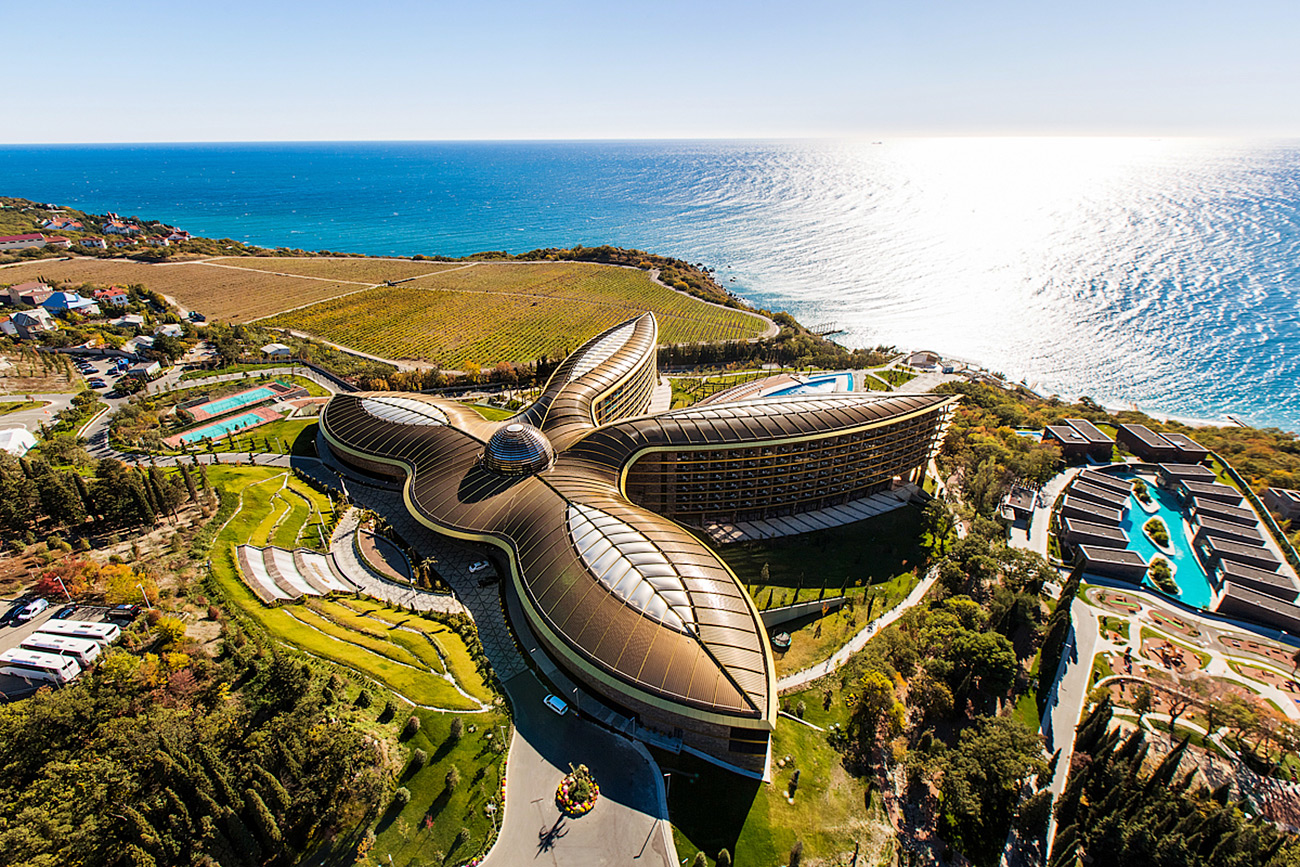
Premium class hotel complex in Crimea, by Norman Foster
Mriya Resort & SpaSince the earliest days, foreign architects have been active in the Russian lands. In the Middle Ages, Italians played an important role building the Kremlin and the earliest Moscow churches. In the 18th and early 19th centuries, the tsars and tsarinas turned to Italian and French architects to build St. Petersburg, while in the second half of the 19th century architects from northern Europe become more prominent, especially with the Art Nouveau.
In the 21st century, foreign architects face a more complicated political and social terrain, and they are not always welcomed for various reasons: highly innovative projects sometimes don’t match the aesthetic tastes of many Russians, and other times the projects are simply too expensive.
Nevertheless, the contemporary Russian architectural scene has a number of success stories of great buildings designed by foreigners.
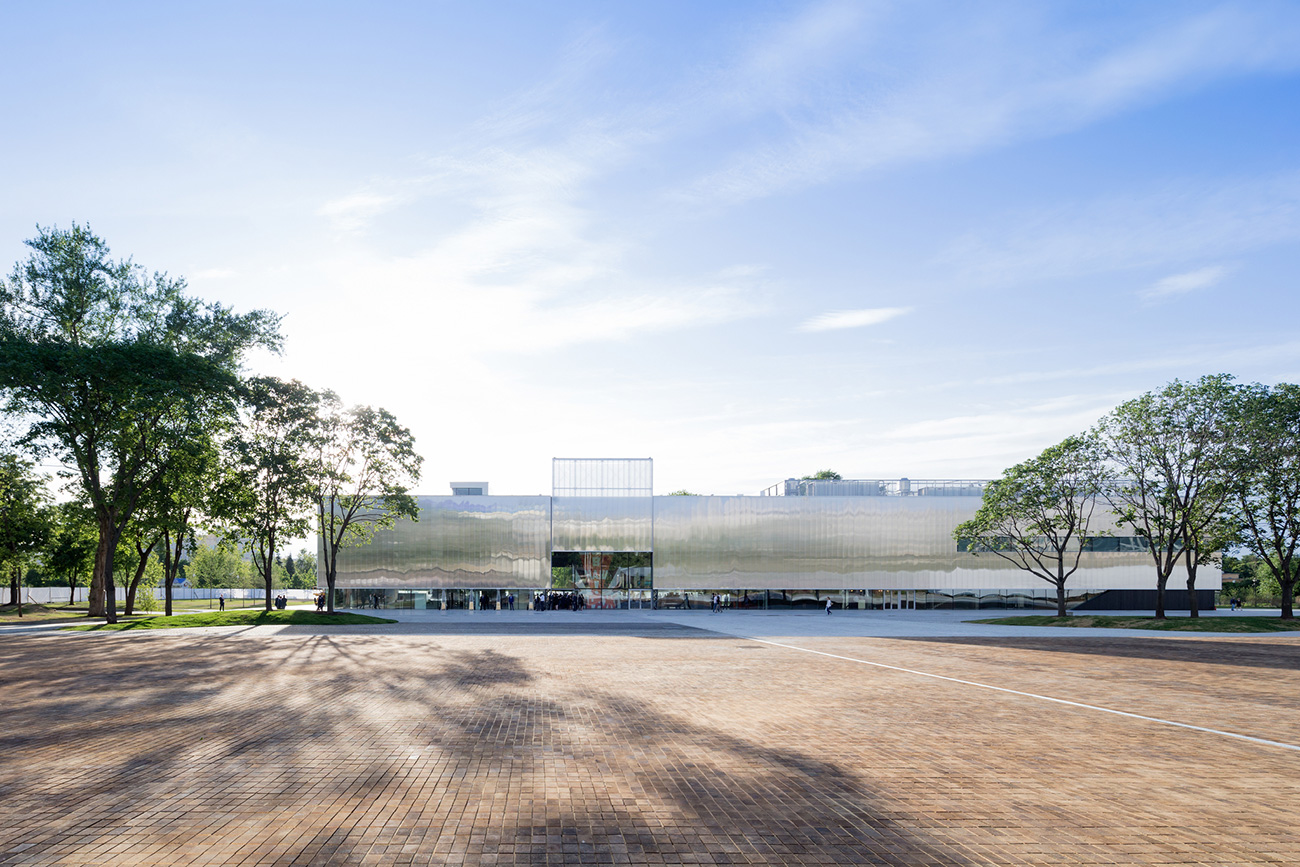
Garage Museum in Gorky Park. Source: Iwan Baan/OMA

Soviet mosaics inside the museum. Source: Iwan Baan/OMA
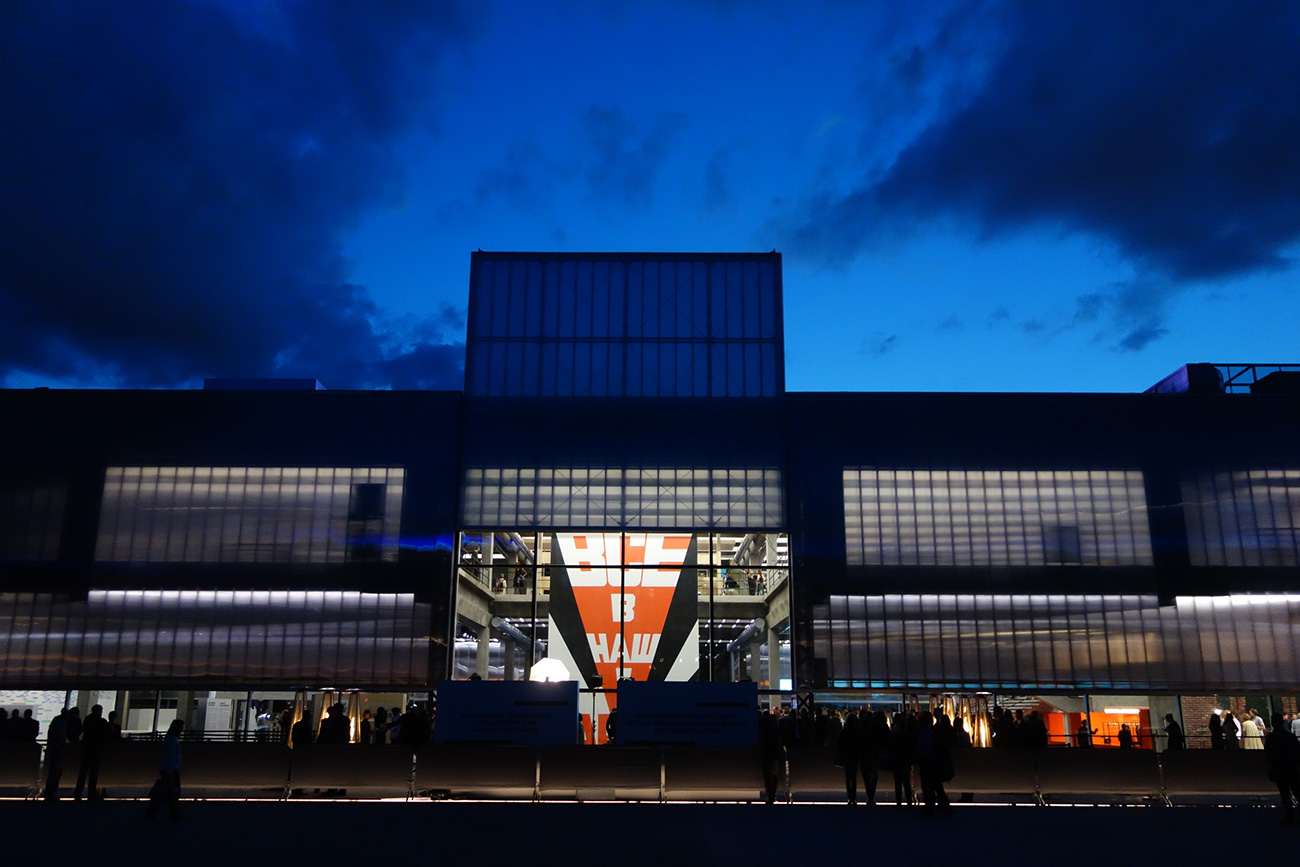
Garage Museum of Contemporary Art. Source: Iwan Baan/OMA
The prominent Dutch architect and his company OMA took the challenge to reconstruct an old Soviet restaurant and turn it into the Garage Museum of Contemporary Art.
Under contract from Russia’s most famous art patron, Dasha Zhukova, Koolhaas turned the ruins of an abandoned Soviet building into a modern polycarbonate rectangular construction with emphasis on functionality. Inside, however, he left the remaining decorative elements such as tile and mosaic panel.
"In this project I show respect for that epoch and atmosphere of the 1960s. Soviet metaphors are still inside," Koolhaas said.
The architect also worked on a project for a new district in St. Petersburg called the Baltic Pearl, but it was finally built by Chinese architect Heng Li and Pacific Studio Arсhitecture.

Inside the Dominion Tower. Source: Ilya Ivanov

The Dominion Tower. Source: Ilya Ivanov
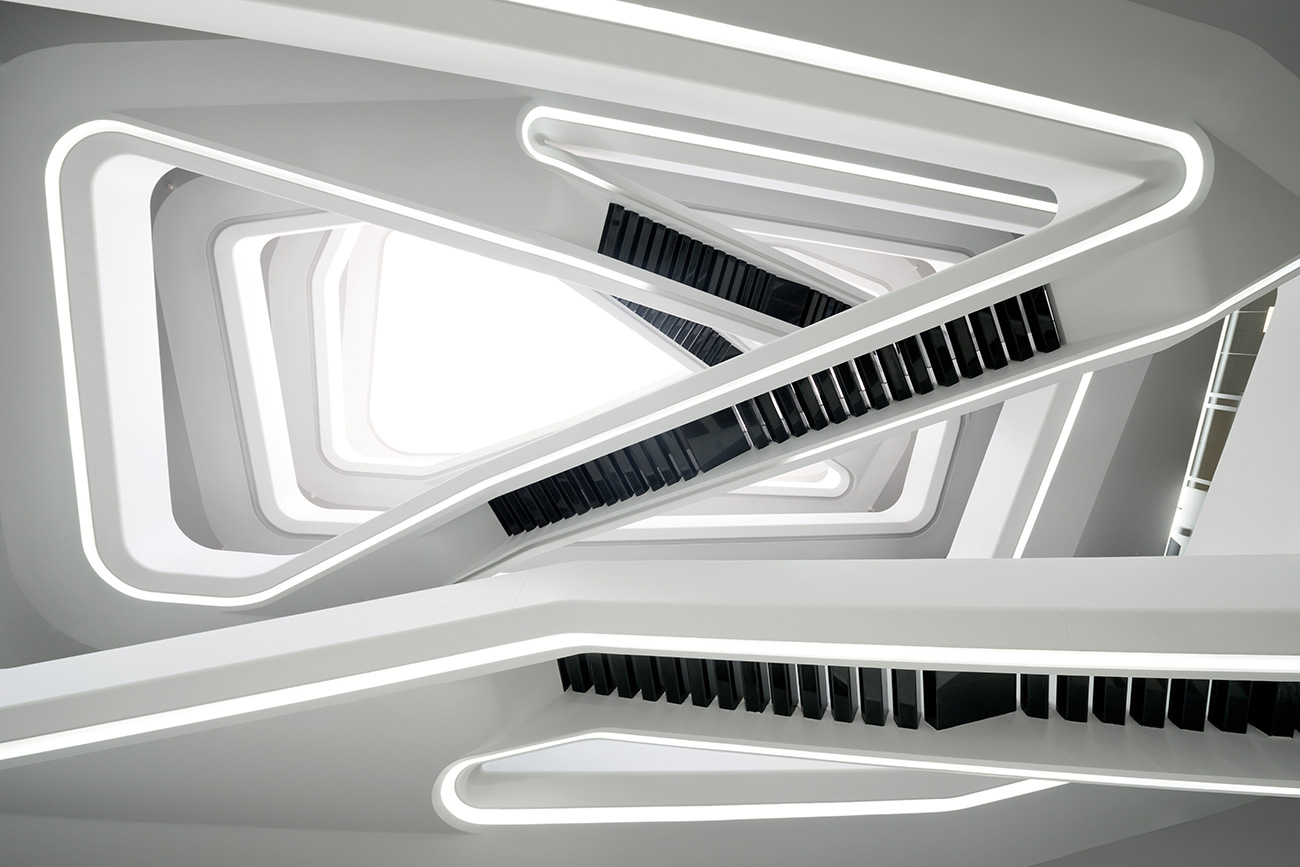
The Dominion Tower. Source: Ilya Ivanov
This Iraqi-British architect and designer, who started her career in Koolhaas’s OMA, has two futuristic buildings in Russia.
First, an office building in Moscow, the Dominion Tower, was built in Hadid’s favorite deconstructivist style. The project was conceived in 2005 and work began in 2008. Due to the global financial crisis, however, it was postponed and the building opened only in September 2015.
The Tower truly sticks out amid its surroundings; it’s a futuristic geometrical building in the middle of an industrial zone on Sharikoposhipnikovskaya Street in Moscow.
Another building by this famous woman is a private house in the Barvikha luxury village. Rumor says that Russian businessman Vladislav Doronin had it built for his then girlfriend, supermodel Naomi Campbell. The house is called Capital Hill Residence and looks like a space shuttle.
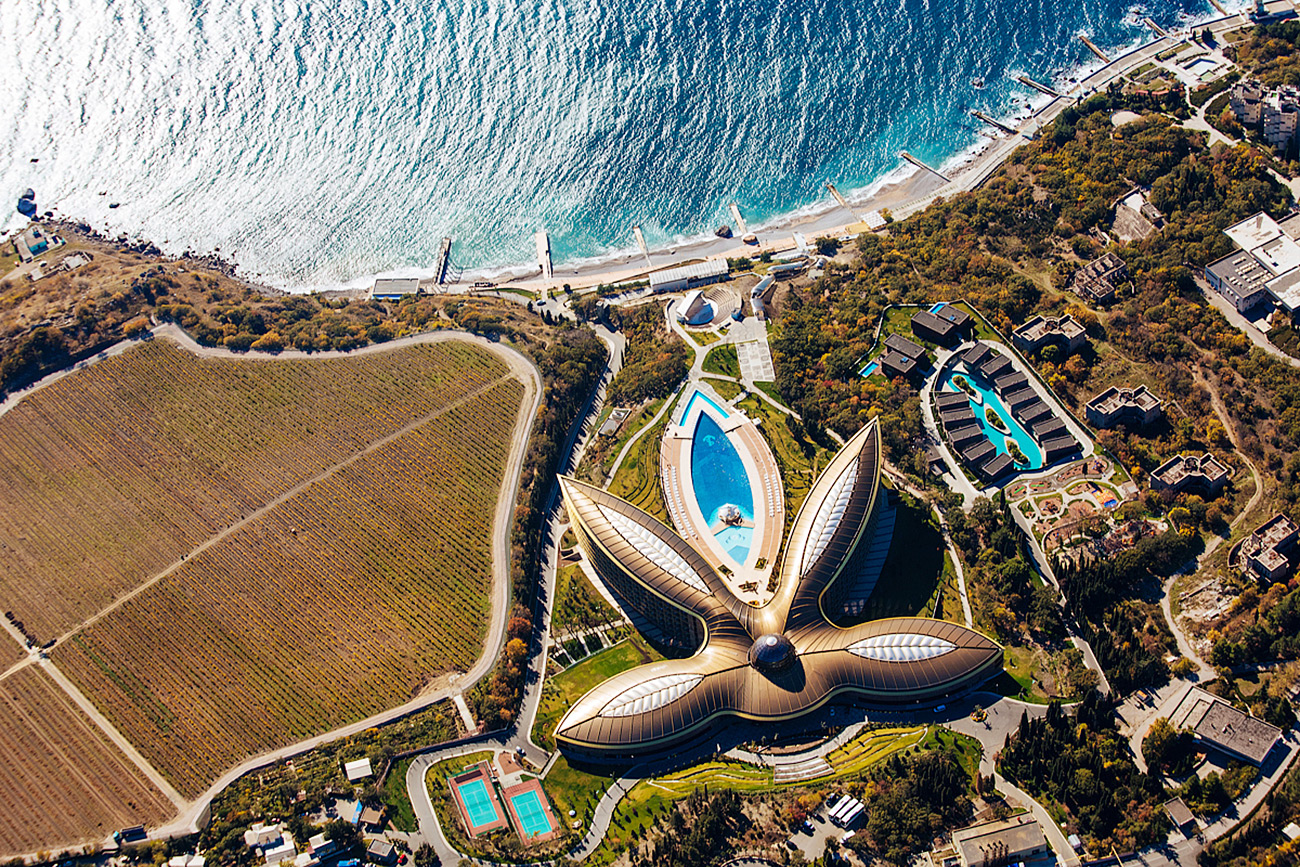
Premium class hotel complex in Crimea, by Norman Foster. Source: Mriya Resort & Spa

Premium class hotel complex in Crimea, by Norman Foster. Source: Mriya Resort & Spa

Premium class hotel complex in Crimea, by Norman Foster. Source: Mriya Resort & Spa
British architect Norman Foster, author of the Millennium Bridge in London, built the luxury Mriya Resort & Spa Hotel 25 kilometers from Yalta. The hotel is in the form of Lotus petals, and has 422 rooms, a conference hall, a spa zone and a private area with villas.
Foster, however, had several projects in Russia that didn’t come to fruition and which were canceled due to the financial crisis. For example, the planned 612-meter high "Russia Tower" in the Moscow City complex was started but then demolished, and the area was eventually turned into a parking garage.
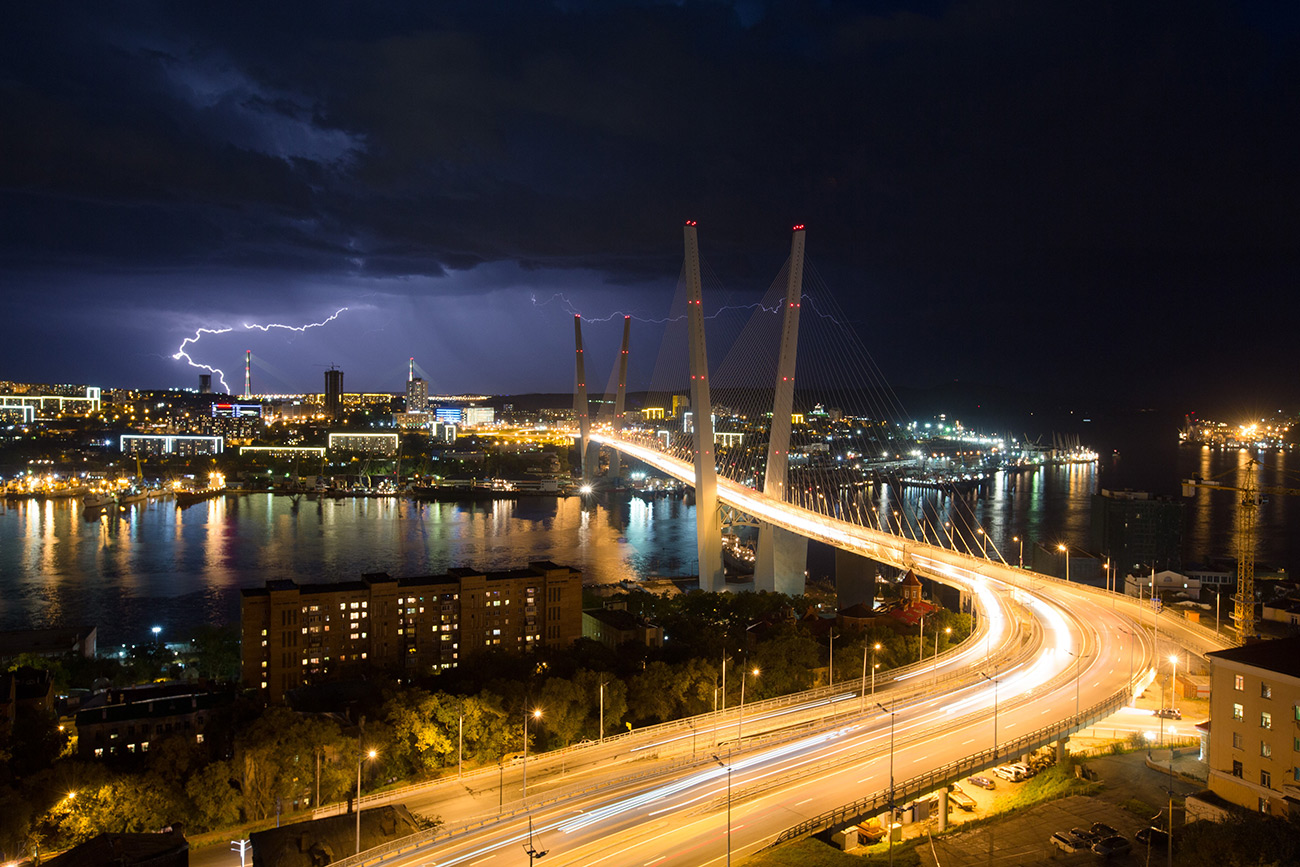
Lightning strikes the city skyline at night beyond the Golden bridge on Golden Horn Bay in Vladivostok. Source: Getty Images
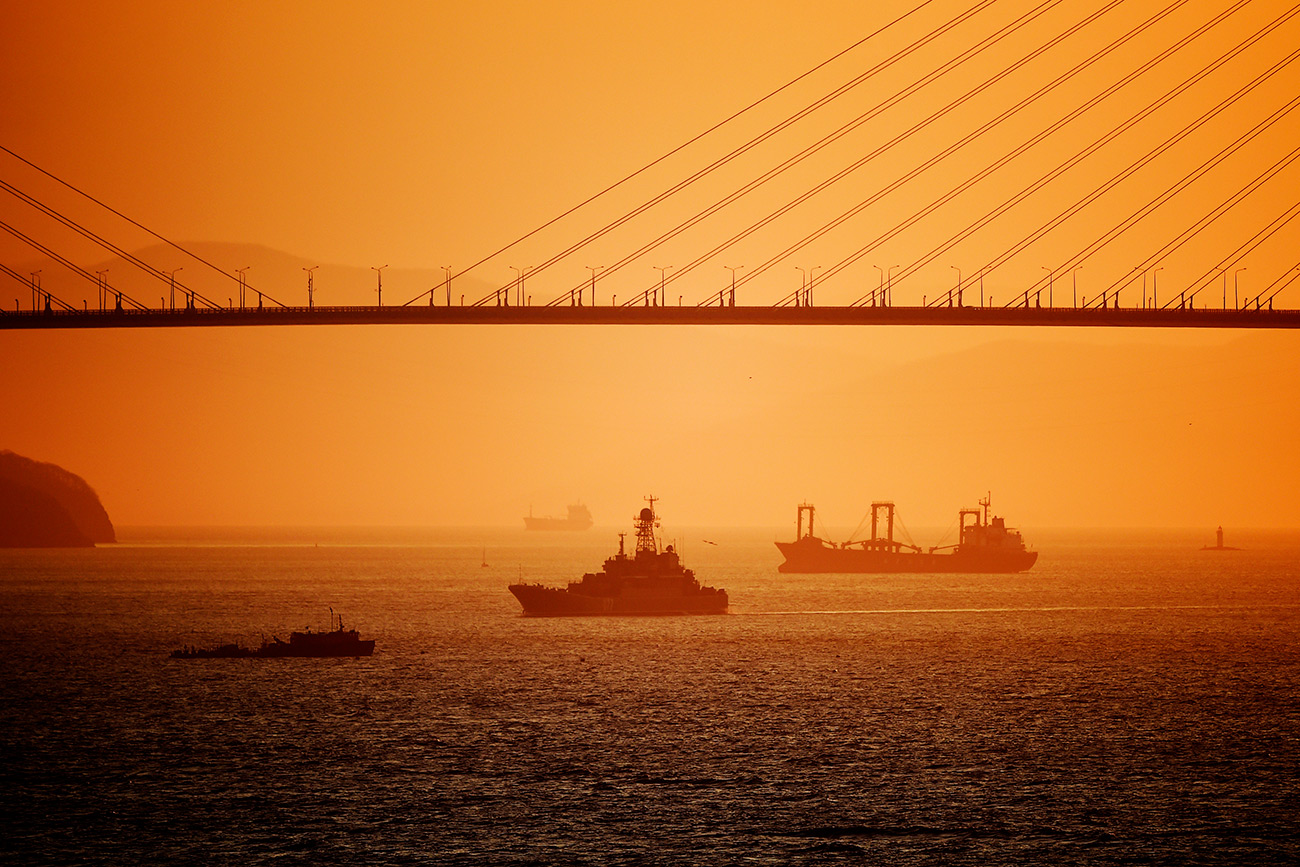
A view of the bridge from the lighthouse on the Basargin Cape. Source: Yuri Smityuk/TASS
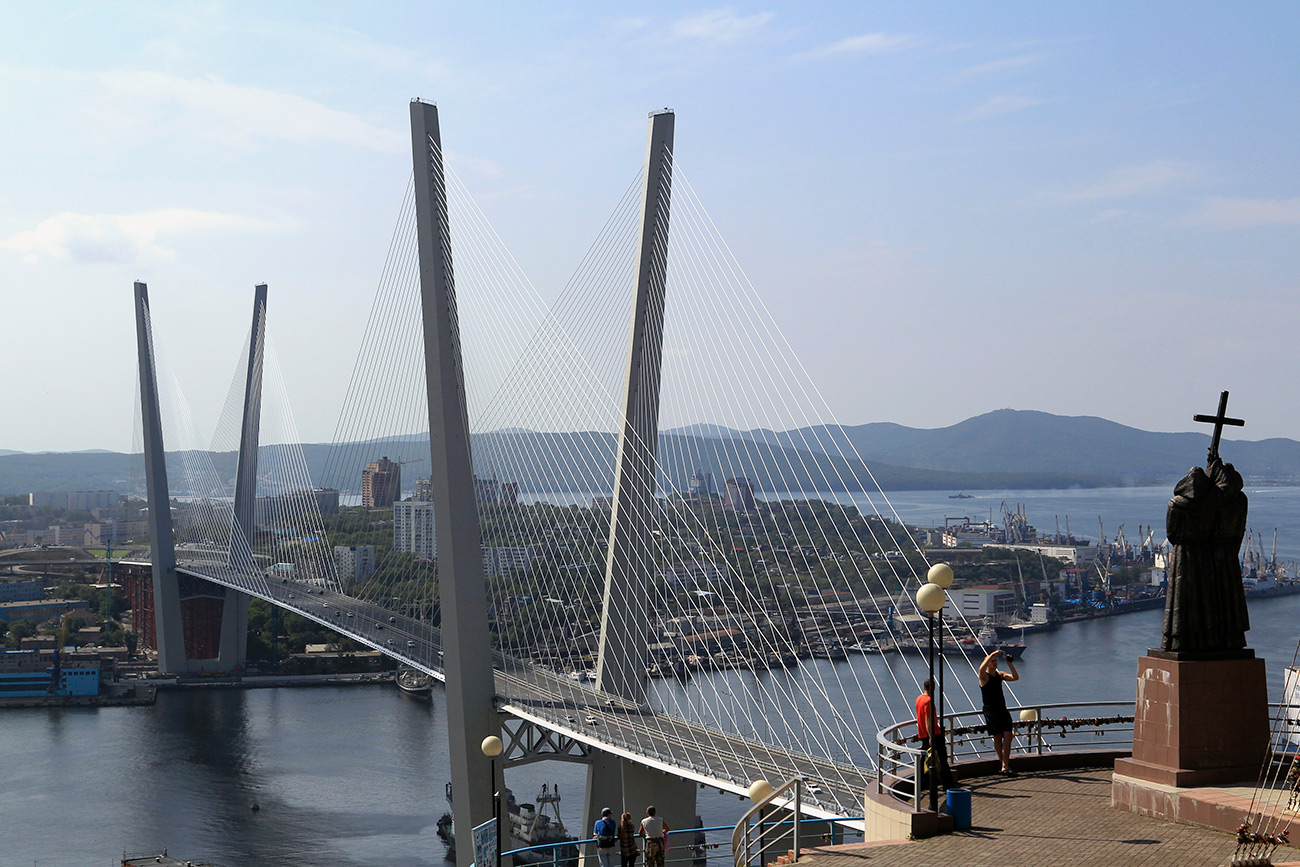
A general view of the bridge behind a statue of Saints Cyril and Methodius who invented Cyrillics. Source: Yuri Smityuk/TASS
Soviet authorities always wanted to make Vladivostok better than a certain other city just across the Pacific – San Francisco. So, Foster was charged with building the Golden Bridge - a breathtaking structure that stretches more than 1.3 kilometers and which is now Vladivostok’s main symbol. This cable-stayed construction hangs above the Golden Horn Bay and was erected for the APEC summit in 2012.
Foster is also building the head office for the Russian Copper Company, and construction should be finished by 2019.
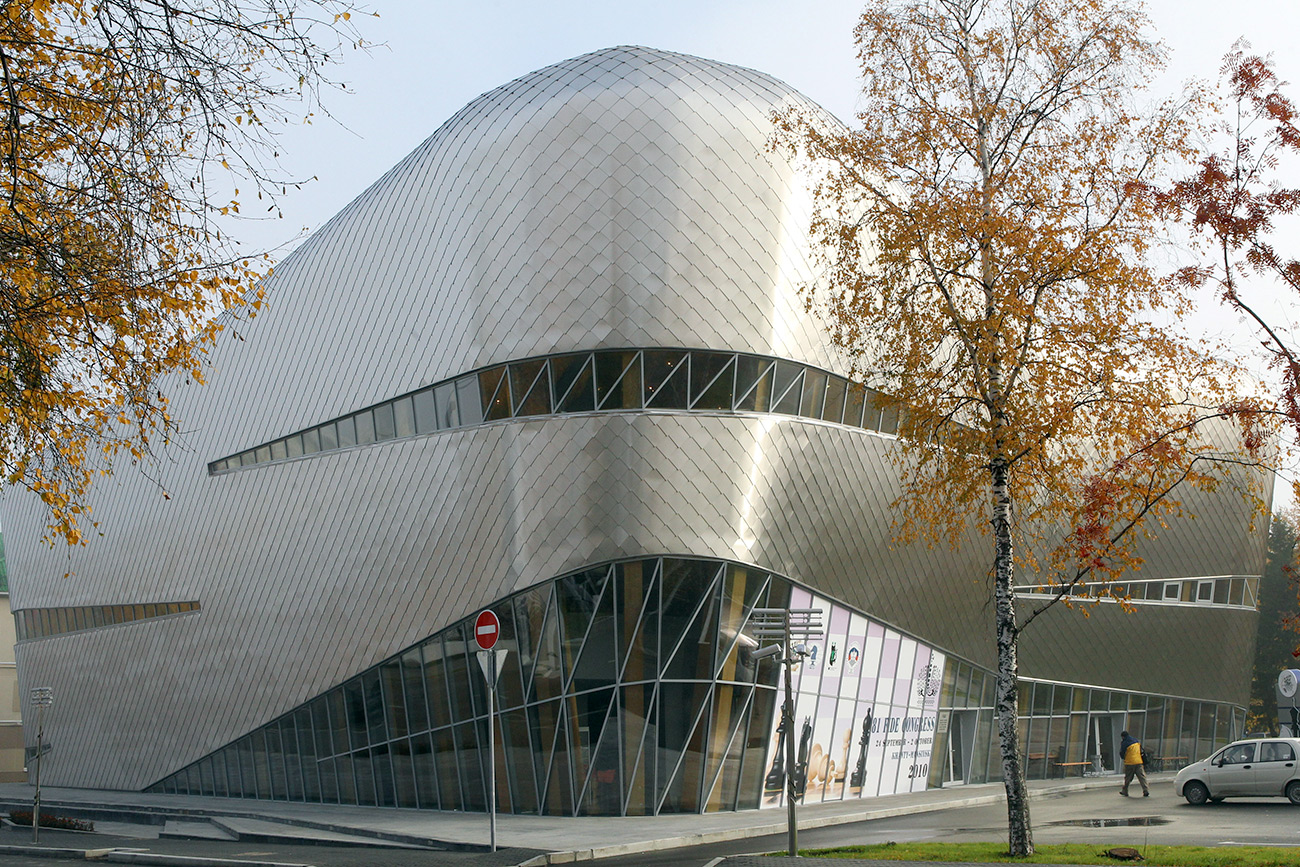
Chess Academy in Khanty-Mansiysk. Source: Vladimir Fedorenko/RIA Novosti
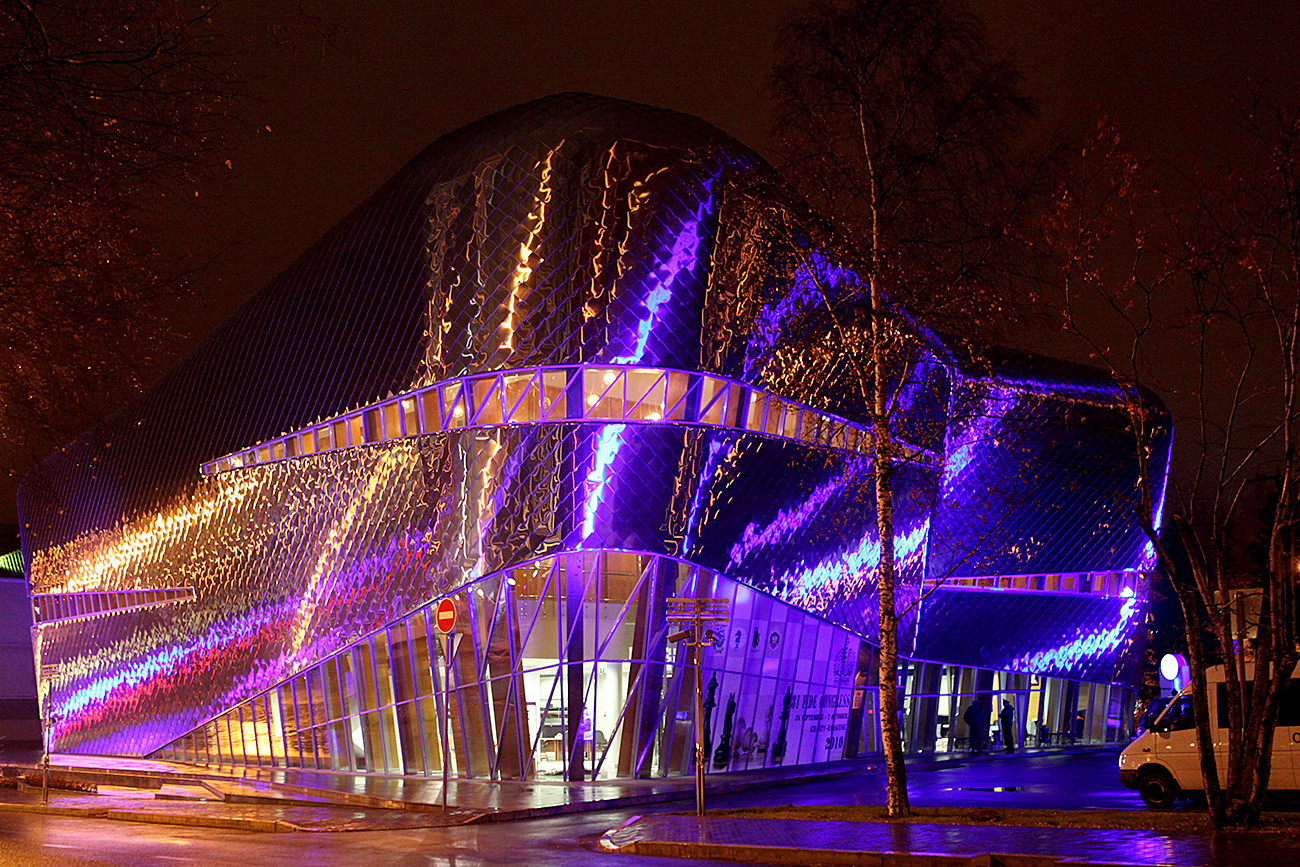
Chess Academy at night. Source: Vladimir Fedorenko/RIA Novosti
Dutch architect Erick Van Egeraat has been working in Russia since the early 2000s saying that the country has great potential. He built the Academy of Chess in Khanty-Mansiysk, winning the Best Building Award in 2011.
Van Egeraat was originally slated to design the City of Capitals towers for the Moscow City International Business Center. The project, however, was deemed too complicated and the contract was instead given to the American architecture firm, NBBJ.
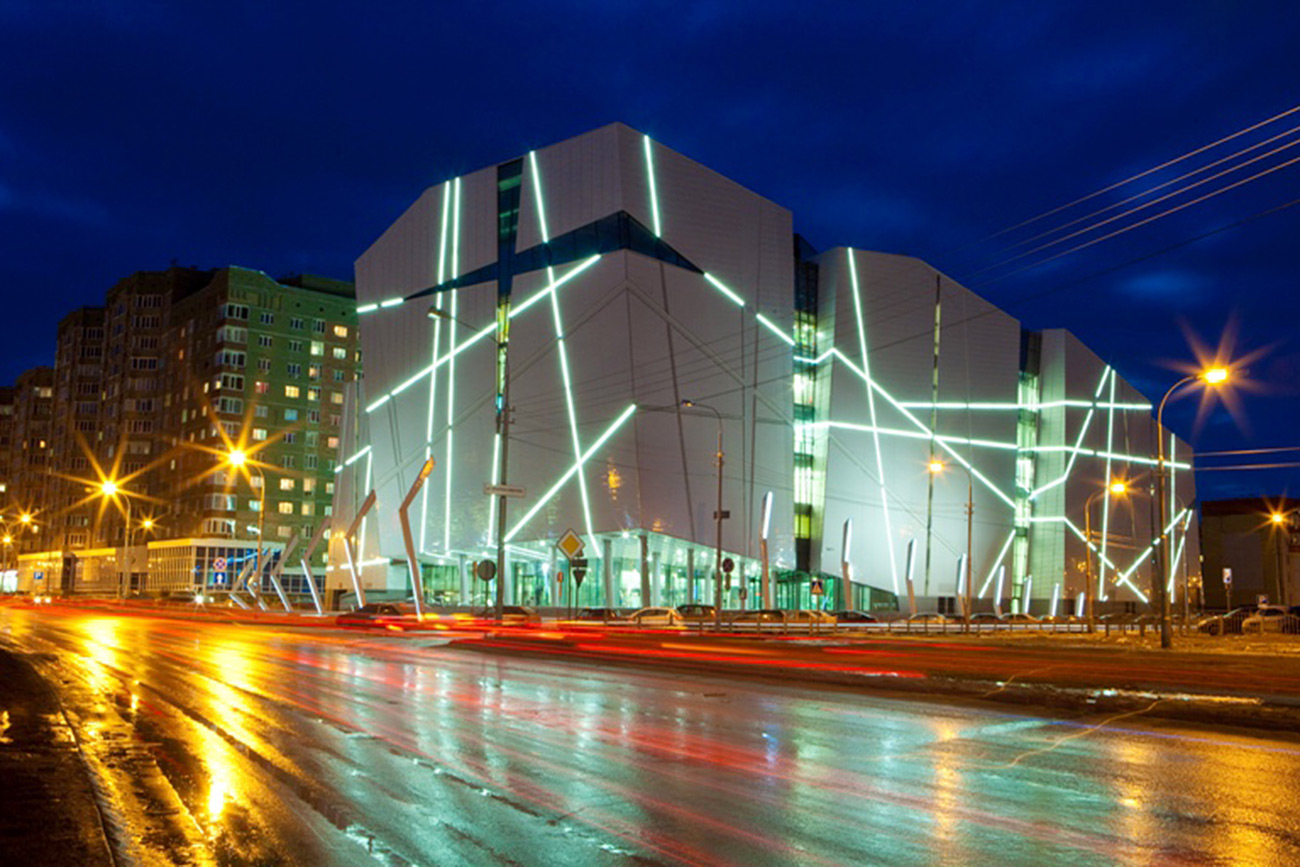
Vershina Mall in Surgut. Source: Vershina
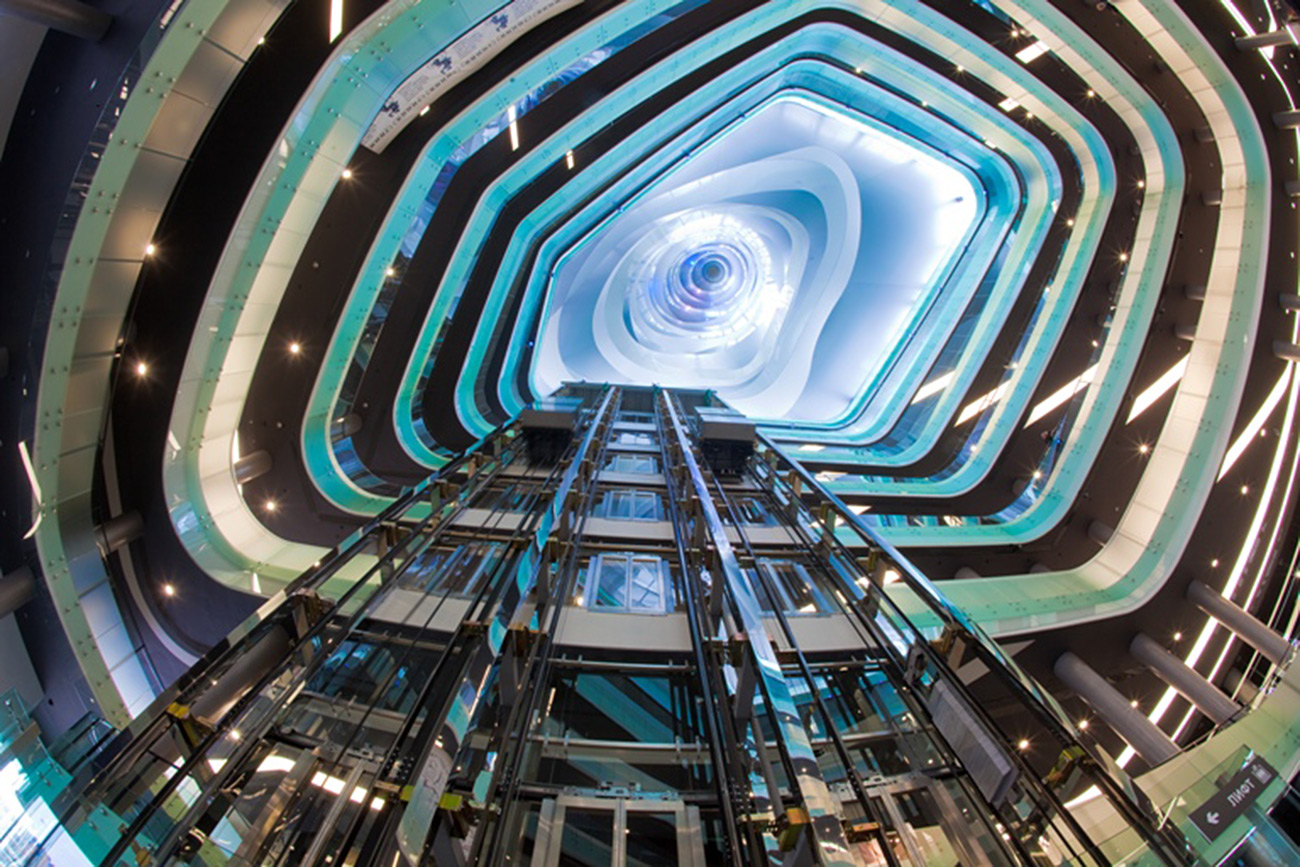
Inside the mall. Source: Vershina
The 2012 Best Building Award went to another of Van Egeraat’s project – the Vershina Mall in Surgut that allows visitors to walk around clockwise.
Van Egeraat also came up with the design to reconstruct the Dynamo Stadium in St. Petersburg, which should have been completed for the 2018 World Cup. The Architectural Heritage Preservation Society, however, decided the project was too innovative, and the project was given to a Russian architecture studio.
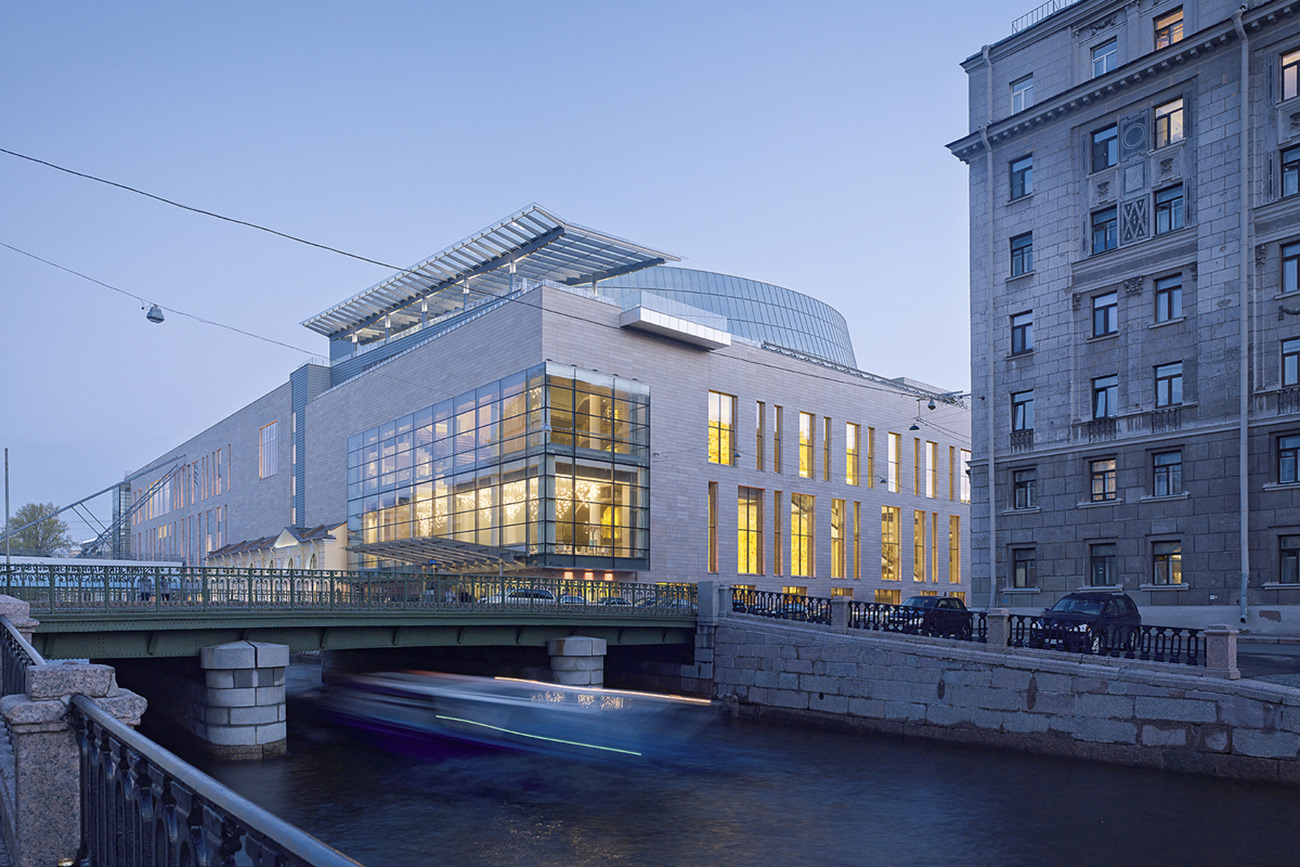
New Stage of the Mariinsky Theater on Kryukov channel in St. Petersburg. Source: Diamond Schmitt Architects
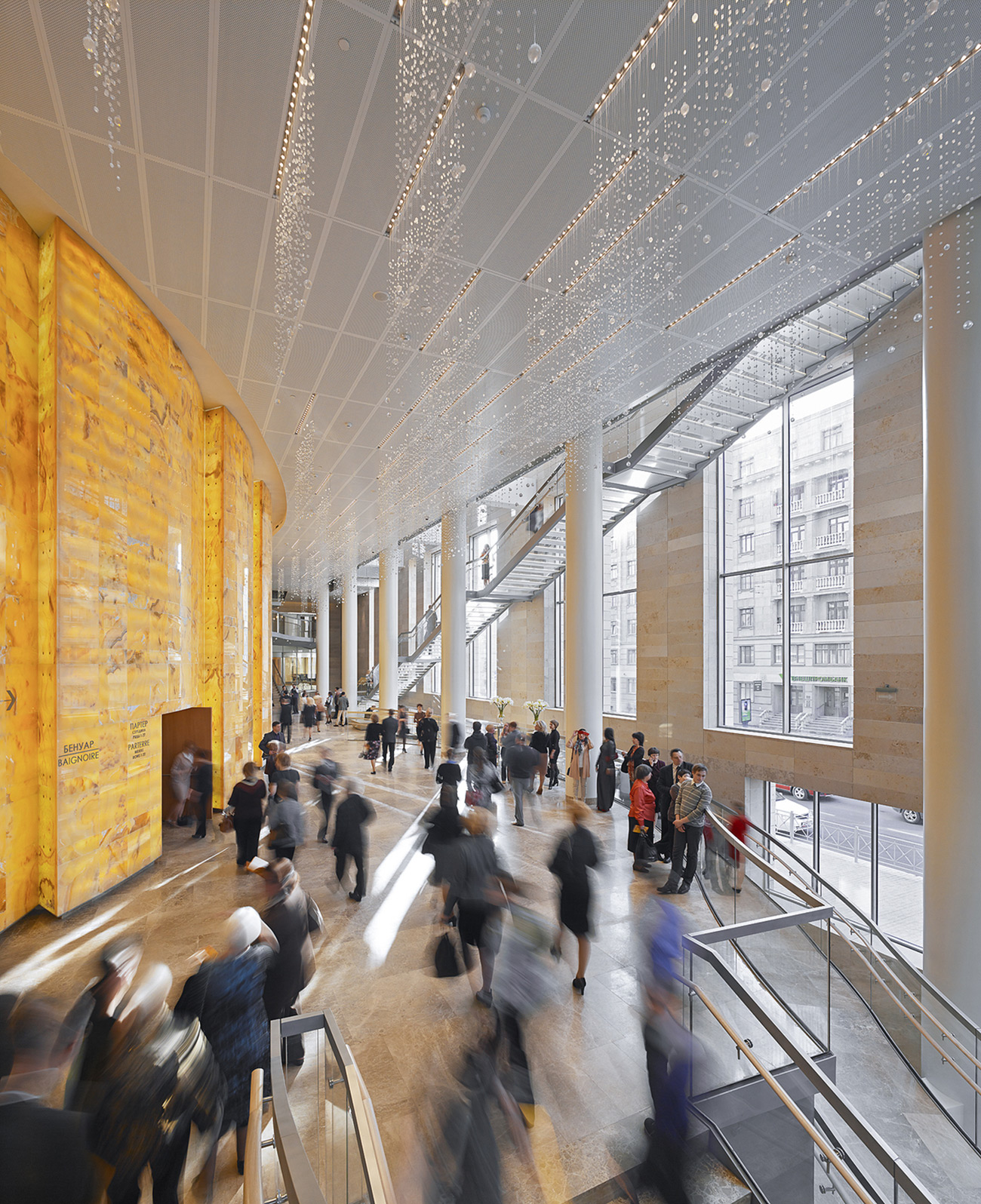
Inside the new building. Source: Diamond Schmitt Architects
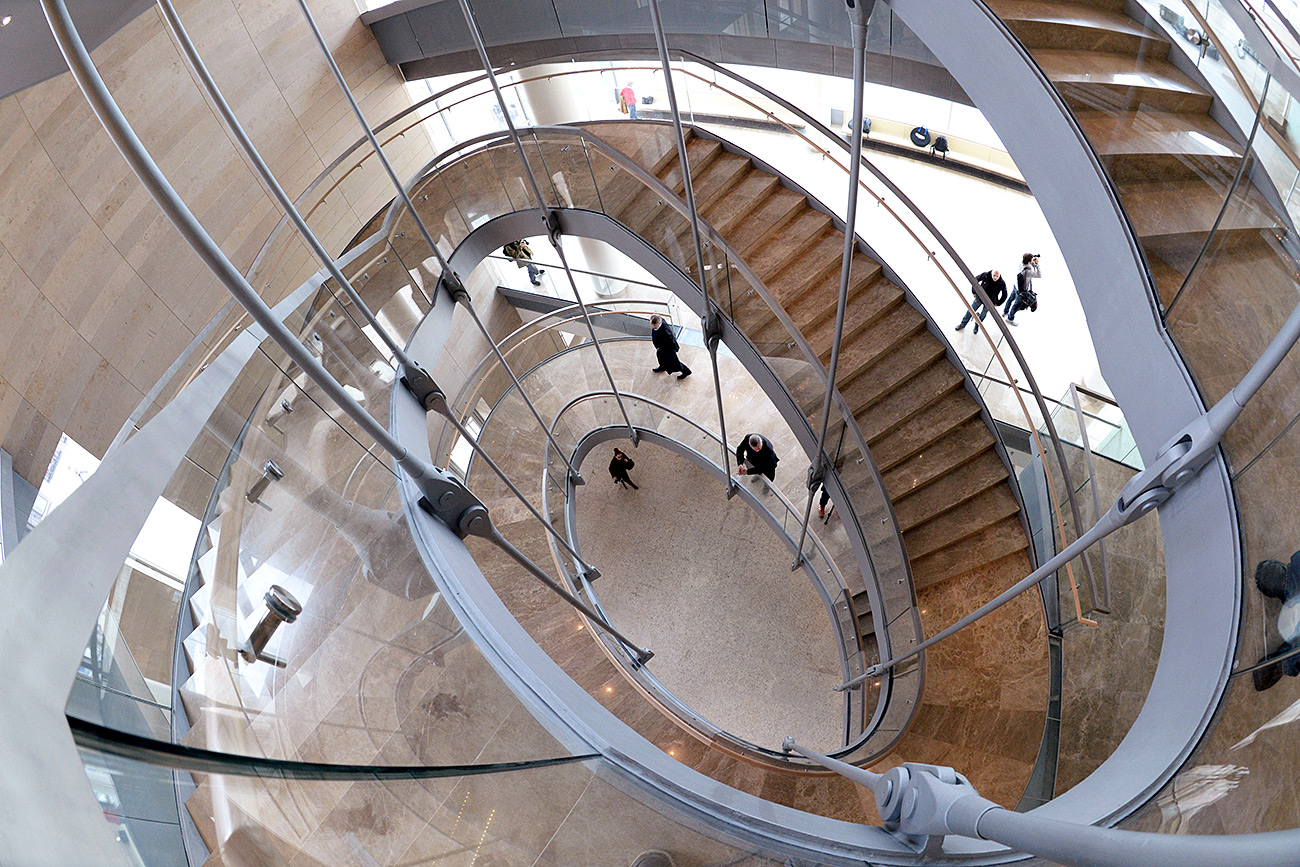
The lobby of the new building. Source: Alexei Danichev/RIA Novosti
Valery Gergiev, head of the Mariinsky Theater, came up with the idea of a new theater in 1997, and when a competition was held five international architectural firms put in bids. French architect Dominique Perrault won, but some time later he was booted from the project and the new theater was completed by Canada's Diamond Schmitt Architects. According to rumors, the new company was chosen personally by Gergiev.
The new Mariinsky, however, is considered a failure. Architectural critic Grigory Revzin called it “something between a department store and McDonalds.”

St. Petersburg stadium on Krestovsky Island. Source: Ruslan Shamukov/RIA Novosti
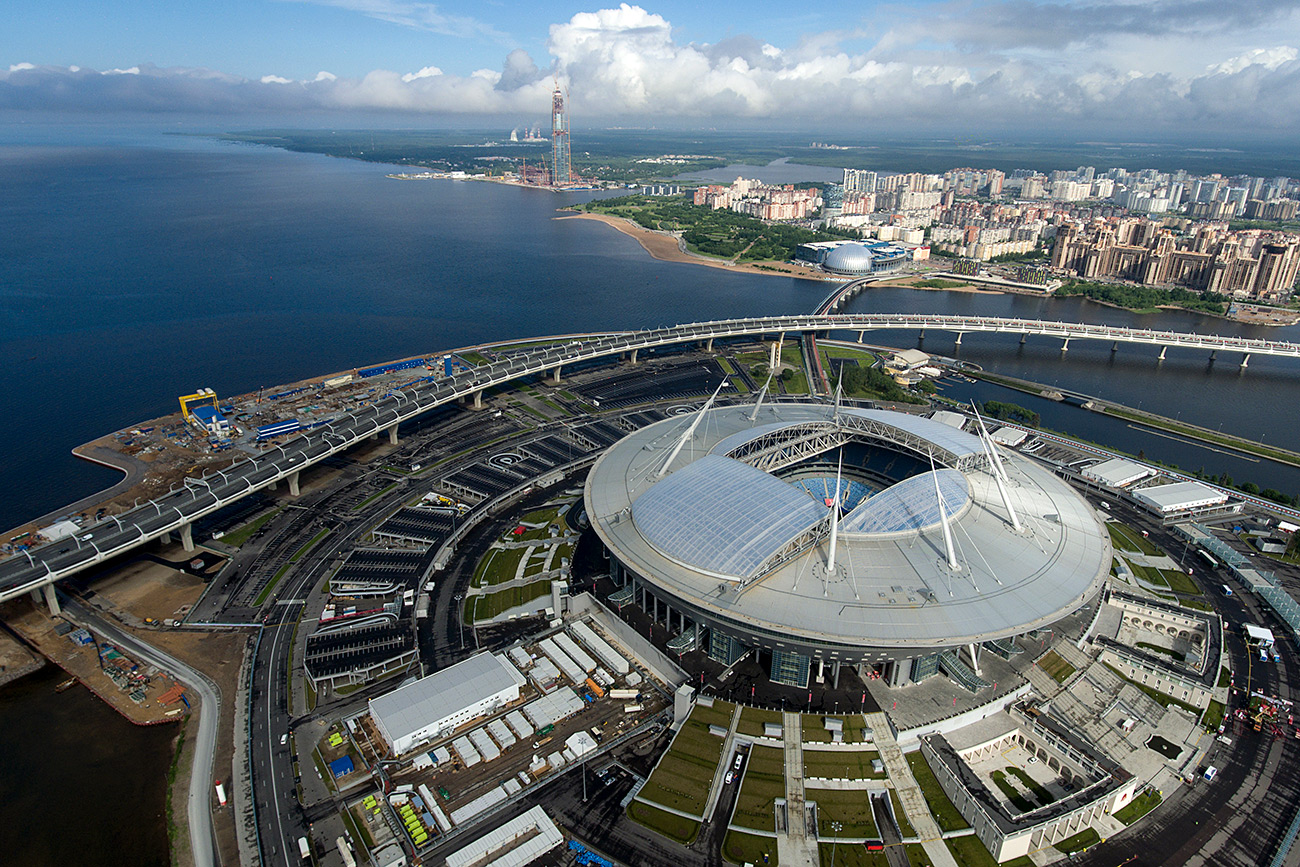
68,000-seat football stadium was built at the cost of 43 billion rubles (about $782 million). Source: Nikolay Gyngazov/Global Look Press
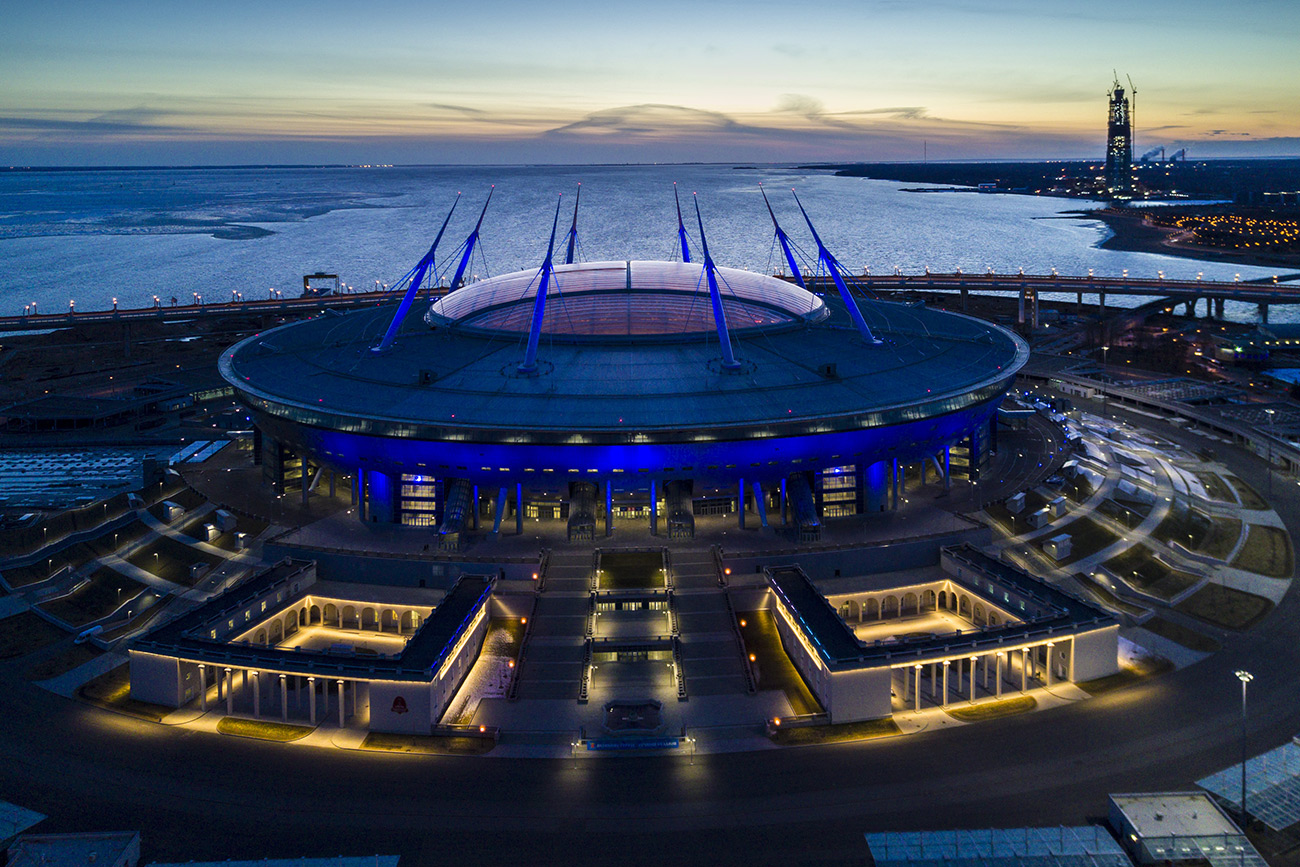
St. Petersburg arena at night. Source: Ruslan Shamukov/RIA Novosti
This is one of the most drawn-out and expensive construction projects in recent history, and it changed names several times during construction – Zenit, Zenit-Arena, Gazprom-Arena. The stadium was designed by Japanese architect Kisho Kurokawa. First, it was announced that 6.7 billion rubles ($113 million) would be needed, but in 2007 the architect died just as work began. The stadium’s price tag constantly increased and finally reached 43 billion rubles ($728 million) when it opened in 2017.
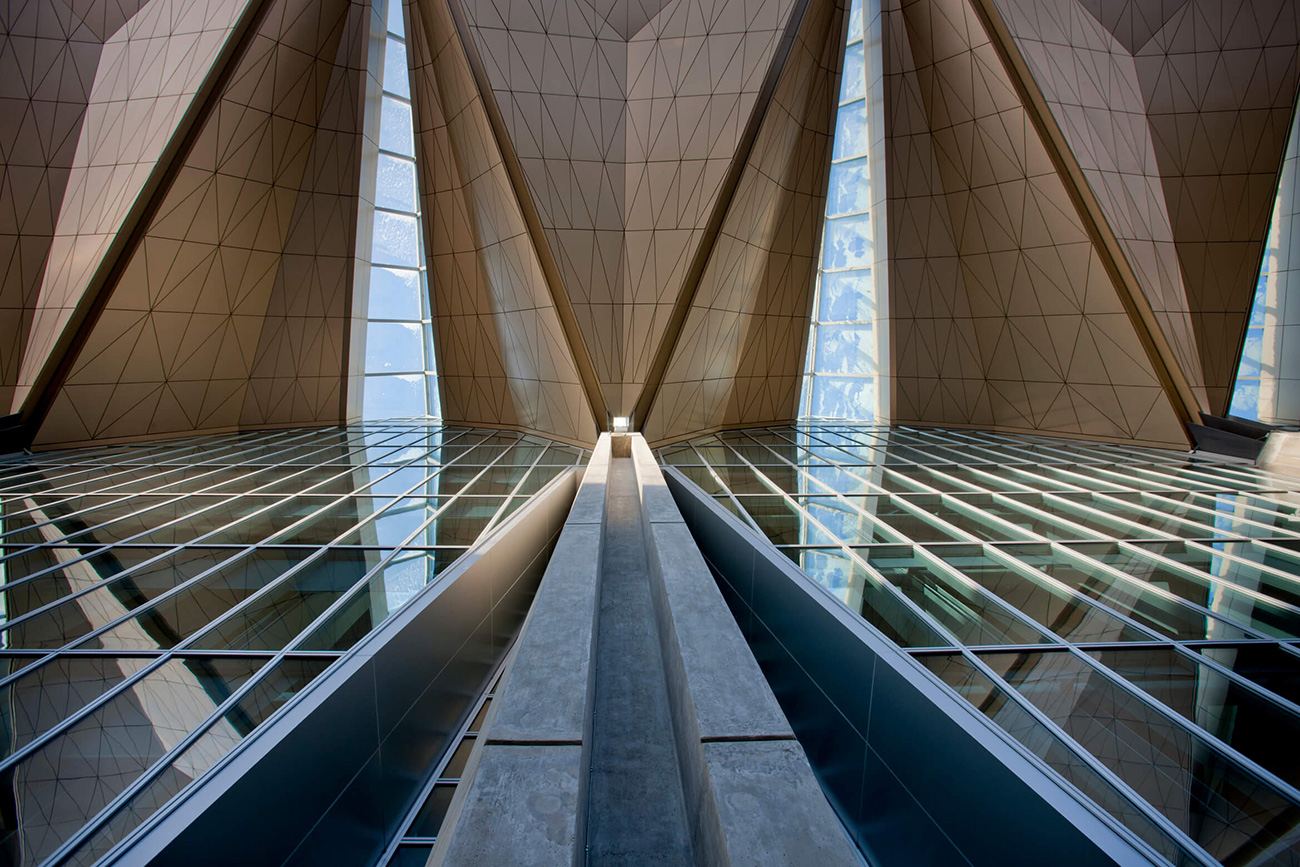
New terminal of Pulkovo Airport. Source: Grimshaw Architects
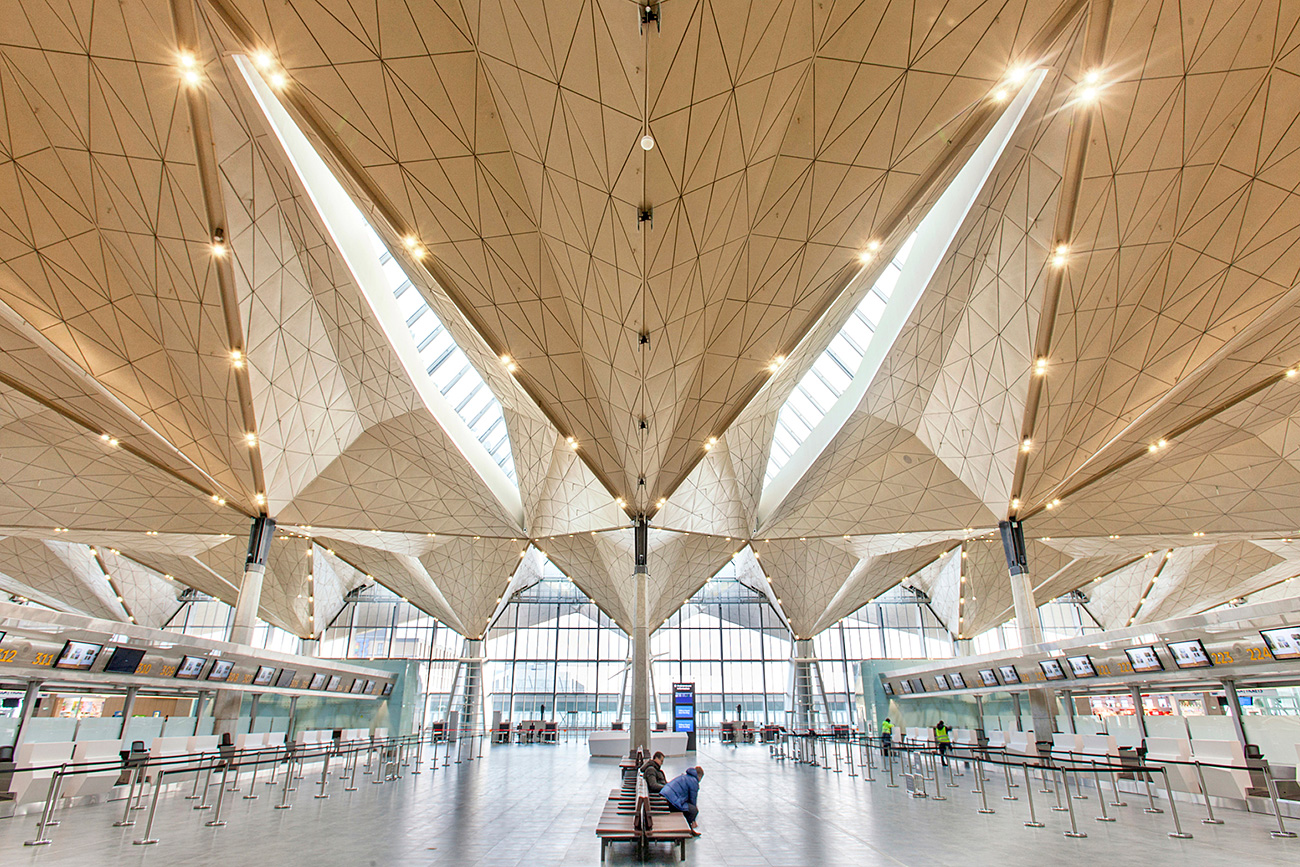
Futuristic golden lines of Pulkovo. Source: Grimshaw Architects
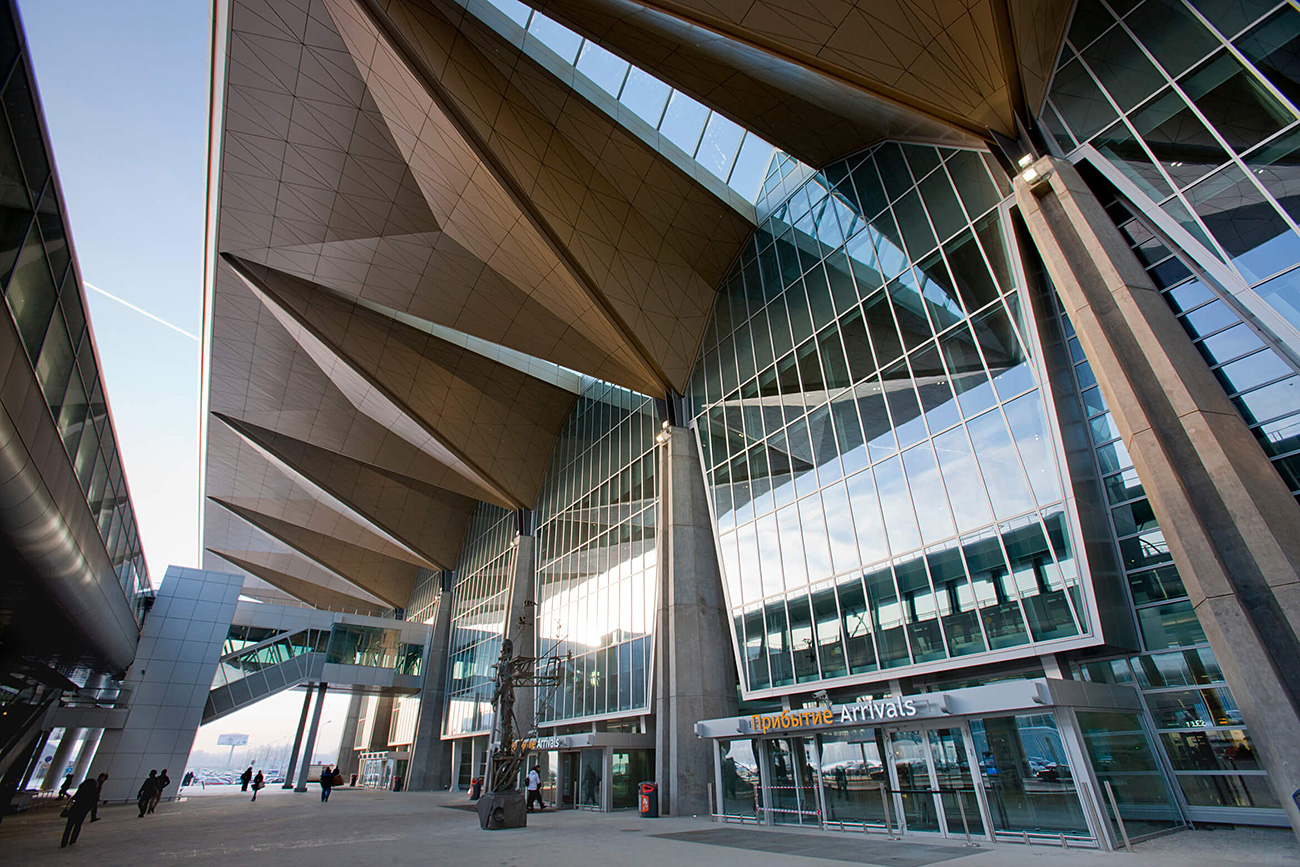
Outside the new terminal. Source: Grimshaw Architects
The first terminal of St. Petersburg’s only airport was built between 1936 and 1950, (with construction coming to a standstill during the Second World War). Then, the Pulkovo-2 terminal was built in 1980, and there have been no new additions since. Even though the city is Russia’s top tourist mecca, all passengers arriving by air had to pass through these two antiquated terminals. So, in 2013 a project led by Grimshaw Architects (U.K.) in collaboration with Ramboll (Denmark) and Pascall+Watson (U.K.), built a new terminal. The design is said to be inspired by St. Petersburg churches, palaces and landscapes with its bridges and islands.
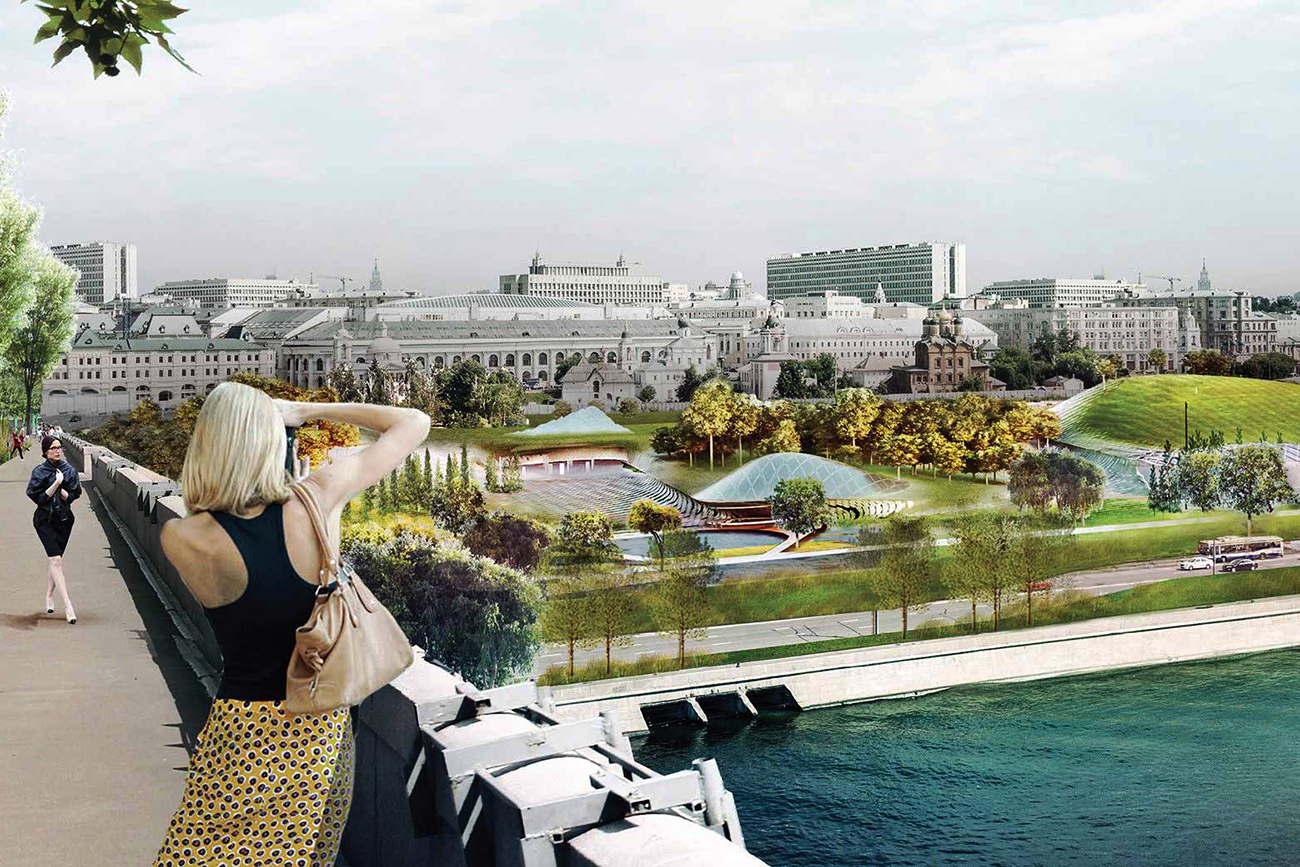
Project of Zaryadye Park. Source: Press Photo
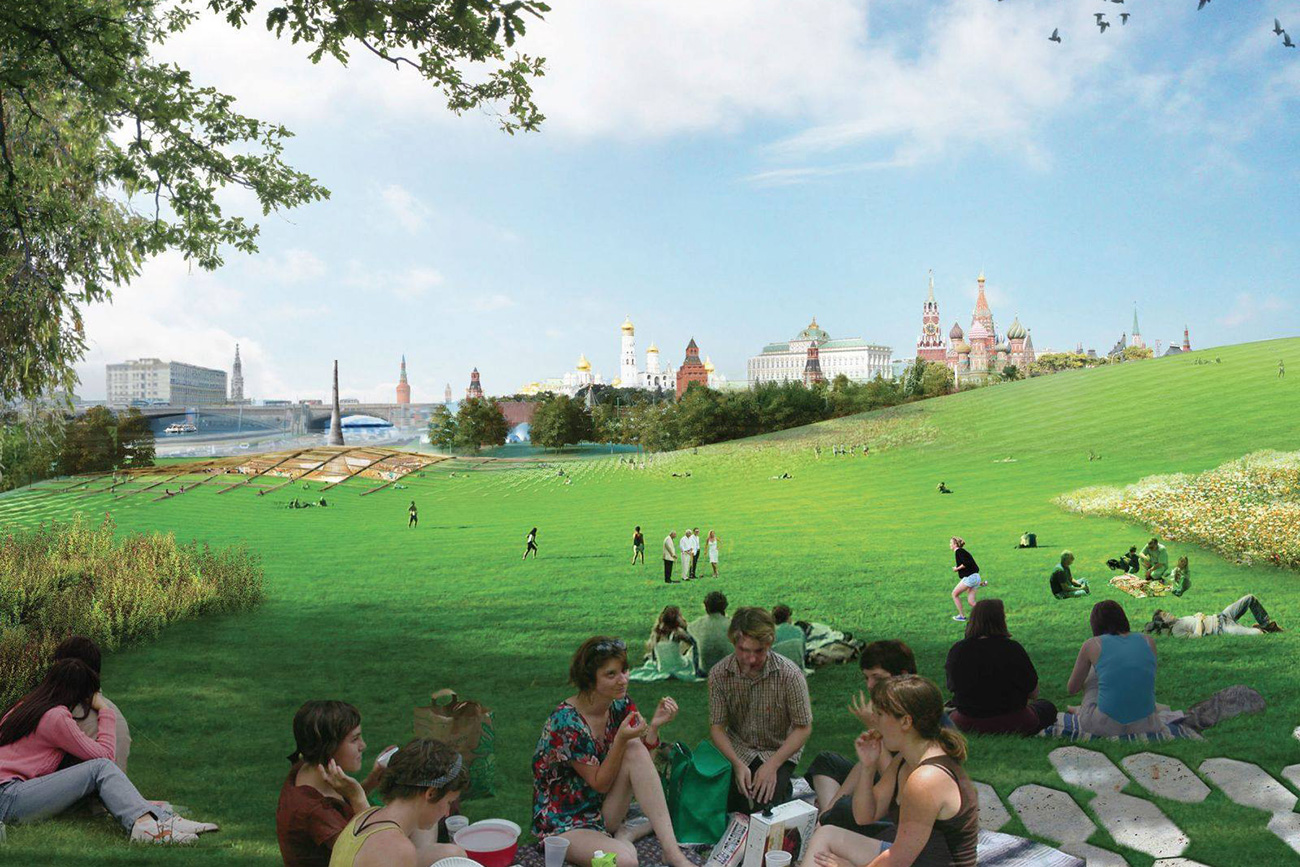
Project of Zaryadye Park. Source: Press photo
New York-based design studio Diller Scofidio + Renfro won the competition to build a park in the center of Moscow near the Kremlin. About 13 hectares are now under construction, to be opened in September.
The project is ambitious, and one of its main features will be four climate zones. There will also be a Philharmonic concert hall and a hotel complex. Another feature will be a floating walking bridge that will offer stunning views.
If using any of Russia Beyond's content, partly or in full, always provide an active hyperlink to the original material.
Subscribe
to our newsletter!
Get the week's best stories straight to your inbox